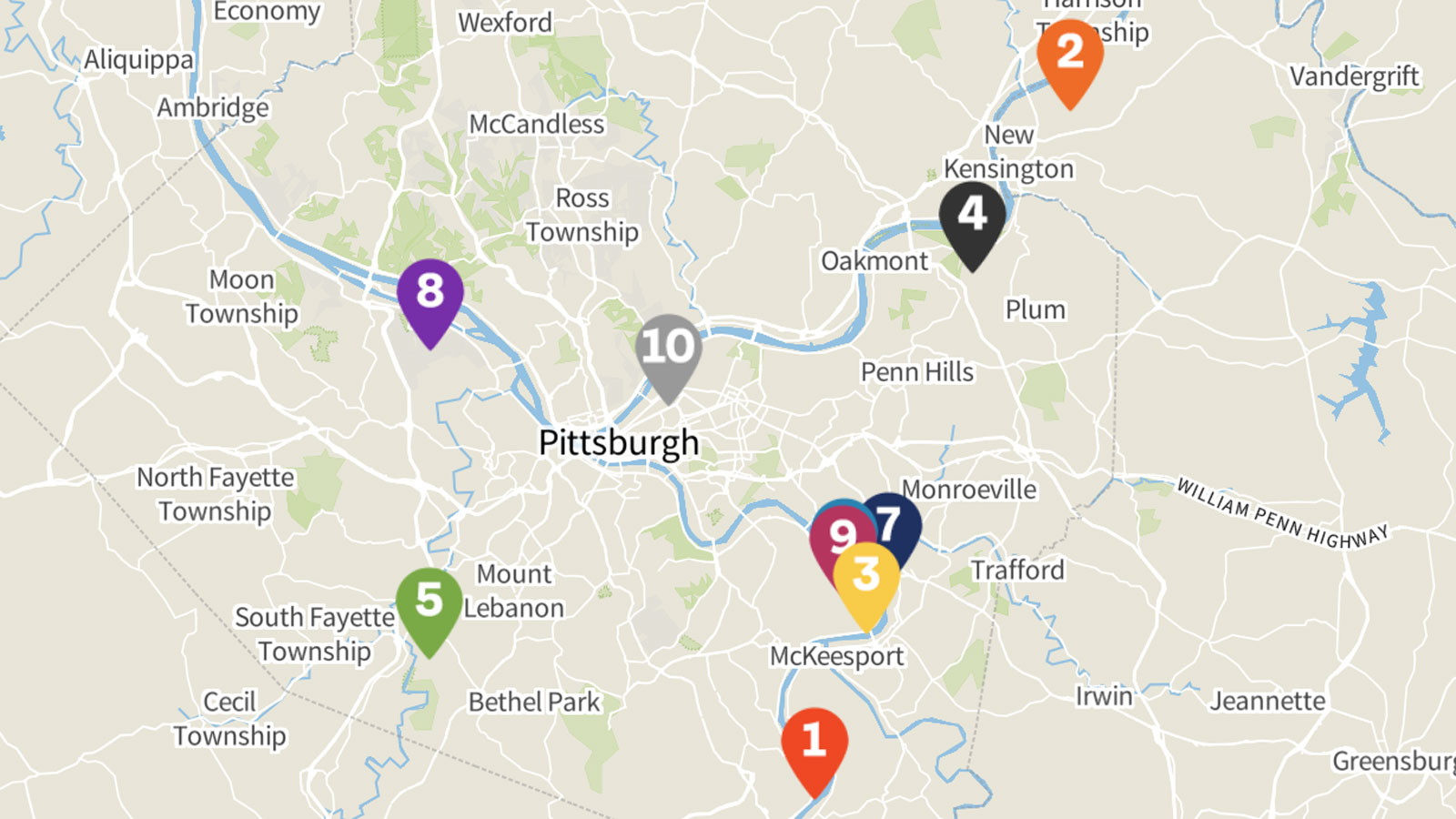
Trouble in the Air
People across America regularly breathe polluted air that increases their risk of premature death, and can also trigger asthma attacks and other adverse health impacts. Trouble in the Air finds hundreds of communities suffered from elevated levels of air pollution in 2018, a problem that will only grow worse as the climate warms. By cutting the emissions that cause air pollution and contribute to global warming, we can protect public health today, while minimizing the warming that threatens our future.
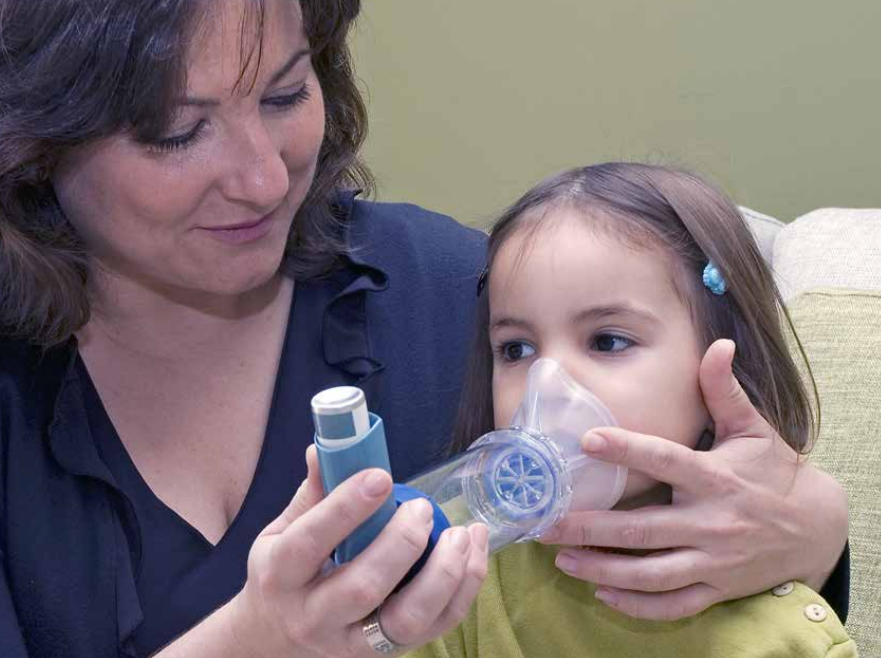
Note: A newer version of this report is available.
People across America regularly breathe polluted air that increases their risk of premature death, and can also trigger asthma attacks and other adverse health impacts.
In 2018, 108 million Americans lived in areas that experienced more than 100 days of degraded air quality. That is equal to more than three months of the year in which ground-level ozone (the main ingredient in smog) and/or particulate pollution was above the level that the EPA has determined presents “little to no risk.” These Americans live in 89 large and small urban areas,* and in 12 rural counties. Millions more Americans are exposed to damaging levels of air pollution, but less frequently.
Policymakers can protect public health by strengthening air quality protections, reducing reliance on fossil fuels that contribute to air pollution, and cutting global warming pollution that will exacerbate future air quality problems.
Each year, millions of Americans suffer from adverse health impacts linked to air pollution, and tens of thousands have their lives cut short.
- Fine particulate matter from sources such as vehicles and power plants was responsible for an estimated 107,000 premature deaths in the U.S. in 2011.
- Air pollution is linked to health problems including respiratory illness, heart attack, stroke, cancer and mental health problems. Research continues to reveal new health impacts. For example, maternal exposure to air pollution such as fine particulates (PM2.5) and ozone is associated with a higher risk of low birth weight, pre-term birth and stillbirth. For older adults, long-term exposure to particulate pollution has been associated with an increased risk of Alzheimer’s disease and other forms of dementia.
- Air pollution’s effects are pronounced among vulnerable populations, including children, pregnant women and the elderly. Research has found that children exposed to particulate pollution can suffer from lung development problems and long-term harm to lung function.
- Levels of air pollution that meet current federal air quality standards can be harmful to health, especially with prolonged exposure. Researchers can detect negative health impacts, such as increased premature deaths, for people exposed to pollution at levels the EPA considers “good” or “moderate.” Current federal standards are less stringent than those recommended by the World Health Organization. Moreover, the EPA cautions that unusually sensitive people may experience health effects at “moderate” levels. For these reasons, the analysis in this report includes air pollution at or above the level the EPA labels “moderate,” corresponding with a rating yellow or higher in its Air Quality Index.
Global warming will make air pollution worse.
- The U.S. Global Change Research Program’s Fourth National Climate Assessment warns that unless the nation acts to improve air quality, “climate change will worsen existing air pollution levels. This worsened air pollution would increase the incidence of adverse respiratory and cardiovascular health effects, including premature death.”
- Climate change will worsen air pollution in several ways, including:
- Rising temperatures will speed up the formation of ozone. According to one study, people in the Northeast, Midwest and Southwest will experience three to nine more days of ozone pollution at or above the level the U.S. EPA considers “unhealthy for sensitive groups” annually by 2050 compared to 2000 because of higher temperatures.
- Hotter, drier weather will increase the frequency and severity of wildfires, which create particulate pollution, contribute to smog, and can spread air pollution for hundreds of miles.
Millions of Americans live in urban and rural areas that experience frequent ozone and/or particulate pollution.
- 108 million Americans lived in the 89 large and small urban areas and 12 rural counties that experienced more than 100 days of degraded air quality in 2018. (See Table ES-1.)
- Another 157 million Americans resided in the 264 large and small urban areas and 61 rural counties that faced 31 to 100 days – a month or more – of elevated ozone and/or particulate pollution. The communities included major urban areas such as the District of Columbia and Miami and smaller communities such as Racine, Wisconsin, and Columbia, Missouri.
Table ES-1. Ten most populated metropolitan areas with more than 100 days of elevated air pollution in 2018
| Metropolitan area | Number of days in 2018 when half or more monitoring locations reported elevated ozone and/or PM2.5 | 2018 population |
| Los Angeles-Long Beach-Anaheim, CA | 156 | 13,291,486 |
| Chicago-Naperville-Elgin, IL-IN-WI | 113 | 9,498,716 |
| Dallas-Fort Worth-Arlington, TX | 106 | 7,539,711 |
| Houston-The Woodlands-Sugar Land, TX | 110 | 6,997,384 |
| Atlanta-Sandy Springs-Roswell, GA | 114 | 5,949,951 |
| Phoenix-Mesa-Scottsdale, AZ | 153 | 4,857,962 |
| Riverside-San Bernardino-Ontario, CA | 227 | 4,622,361 |
| Detroit-Warren-Dearborn, MI | 118 | 4,326,442 |
| San Diego-Carlsbad, CA | 160 | 3,343,364 |
| Denver-Aurora-Lakewood, CO | 131 | 2,932,415 |
Note: This count includes air pollution at or above the level the EPA labels “moderate,” indicated in yellow or worse in its Air Quality Index.
Figure ES-1. Both urban and rural areas experienced frequent ozone and/or particulate pollution in 2018
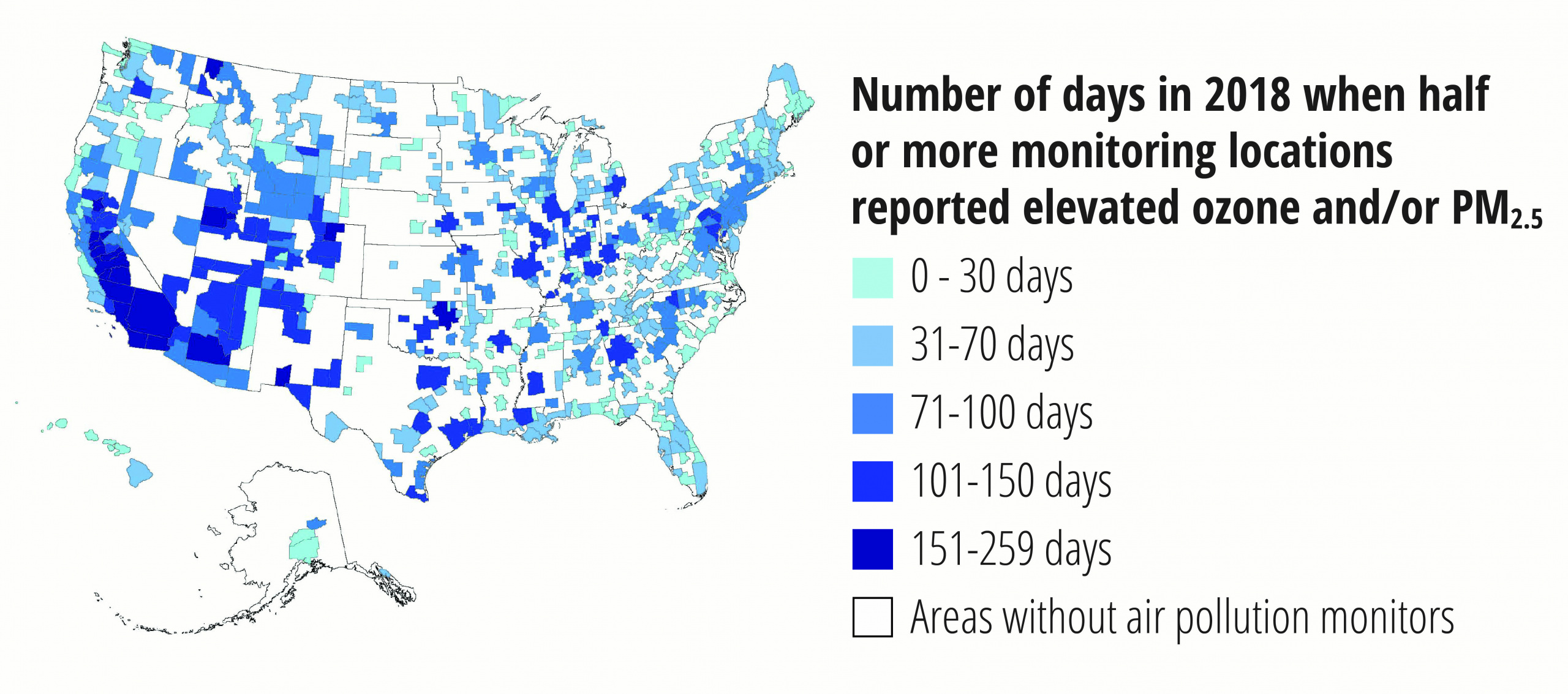
People in every state face health risks from ground-level ozone pollution.
- Thirty-eight urban areas and rural counties, which are home to more than 21 million people, experienced more than 100 days of ozone pollution in 2018. Such frequent ozone pollution affected people living in communities in California, New Mexico, Arizona, Utah, Colorado and Wyoming. Table ES-2 shows the most populated metropolitan areas that experienced more than 100 days of elevated ozone levels.
- Residents of another 228 large and small urban areas and rural counties encountered air with elevated levels of ozone pollution on 31 to 100 days in 2018. That means that for one to three months in 2018, up to 170 million Americans were exposed to elevated ozone pollution. Those rural counties and urban areas were located in 45 different states, plus the District of Columbia.
Table ES-2. Ten most populated metropolitan areas with more than 100 days of ozone pollution in 2018
| Metropolitan area | Number of days in 2018 when half or more monitoring locations reported elevated ozone | 2018 population |
| Phoenix-Mesa-Scottsdale, AZ | 110 | 4,857,962 |
| Riverside-San Bernardino-Ontario, CA | 166 | 4,622,361 |
| Las Vegas-Henderson-Paradise, NV | 132 | 2,231,647 |
| Salt Lake City, UT | 111 | 1,222,540 |
| Fresno, CA | 137 | 994,400 |
| Albuquerque, NM | 123 | 915,927 |
| Bakersfield, CA | 178 | 896,764 |
| Colorado Springs, CO | 119 | 738,939 |
| Ogden-Clearfield, UT | 108 | 675,067 |
| Provo-Orem, UT | 104 | 633,768 |
Particulate pollution is widespread, exposing millions of Americans to potential health damage. 34 million people lived in areas with more than 100 days of elevated fine particulate pollution in 2018. (Table ES-3 shows the most populated metropolitan areas that experienced frequent fine particulate pollution.)
Table ES-3. Ten most populated metropolitan areas with more than 100 days of particulate pollution in 2018
| Metropolitan area | Number of days in 2018 when half or more monitoring locations reported elevated PM2.5 | 2018 population |
| Los Angeles-Long Beach-Anaheim, CA | 135 | 13,291,486 |
| Riverside-San Bernardino-Ontario, CA | 154 | 4,622,361 |
| San Diego-Carlsbad, CA | 138 | 3,343,364 |
| Cincinnati, OH-KY-IN | 111 | 2,190,209 |
| Austin-Round Rock, TX | 108 | 2,168,316 |
| Fresno, CA | 157 | 994,400 |
| Tulsa, OK | 146 | 993,797 |
| Bakersfield, CA | 110 | 896,764 |
| McAllen-Edinburg-Mission, TX | 115 | 865,939 |
| Stockton-Lodi, CA | 183 | 752,660 |
Air pollution already harms the health of millions of Americans around the country and cuts short tens of thousands of lives each year. Climate change will make it worse. Many solutions that address the climate challenge will also improve air quality. Policymakers at the federal, state and local levels should look to implement policies that:
- Reduce emissions from transportation, the largest source of global warming pollution in the U.S. and a major source of air pollution in many communities. Policies to reduce global warming and air pollution include expanded use of zero-emission vehicles, regional programs to cap pollution from transportation, and support for active transportation such as walking and biking.
- Move the country away from fossil fuels – which are a major source of climate pollution in transportation, electricity generation and buildings – and toward the use of clean, renewable energy like wind turbines and solar panels.
- Strengthen, and strongly enforce, emission and air quality standards to fully protect human health.
* Throughout this report, our mention of “large and small urban areas” includes metropolitan areas (population above 50,000) and micropolitan areas (which have a population of 10,000 to 50,000 people).
Topics
Authors
Elizabeth Ridlington
Associate Director and Senior Policy Analyst, Frontier Group
Elizabeth Ridlington is associate director and senior policy analyst with Frontier Group. She focuses primarily on global warming, toxics, health care and clean vehicles, and has written dozens of reports on these and other subjects. Elizabeth graduated with honors from Harvard with a degree in government. She joined Frontier Group in 2002. She lives in Northern California with her son.
Gideon Weissman
Former Policy Analyst, Frontier Group
Morgan Hayward
Former Director, Destination: Zero Carbon, Environment America Research & Policy Center
Find Out More

Lawn care goes electric
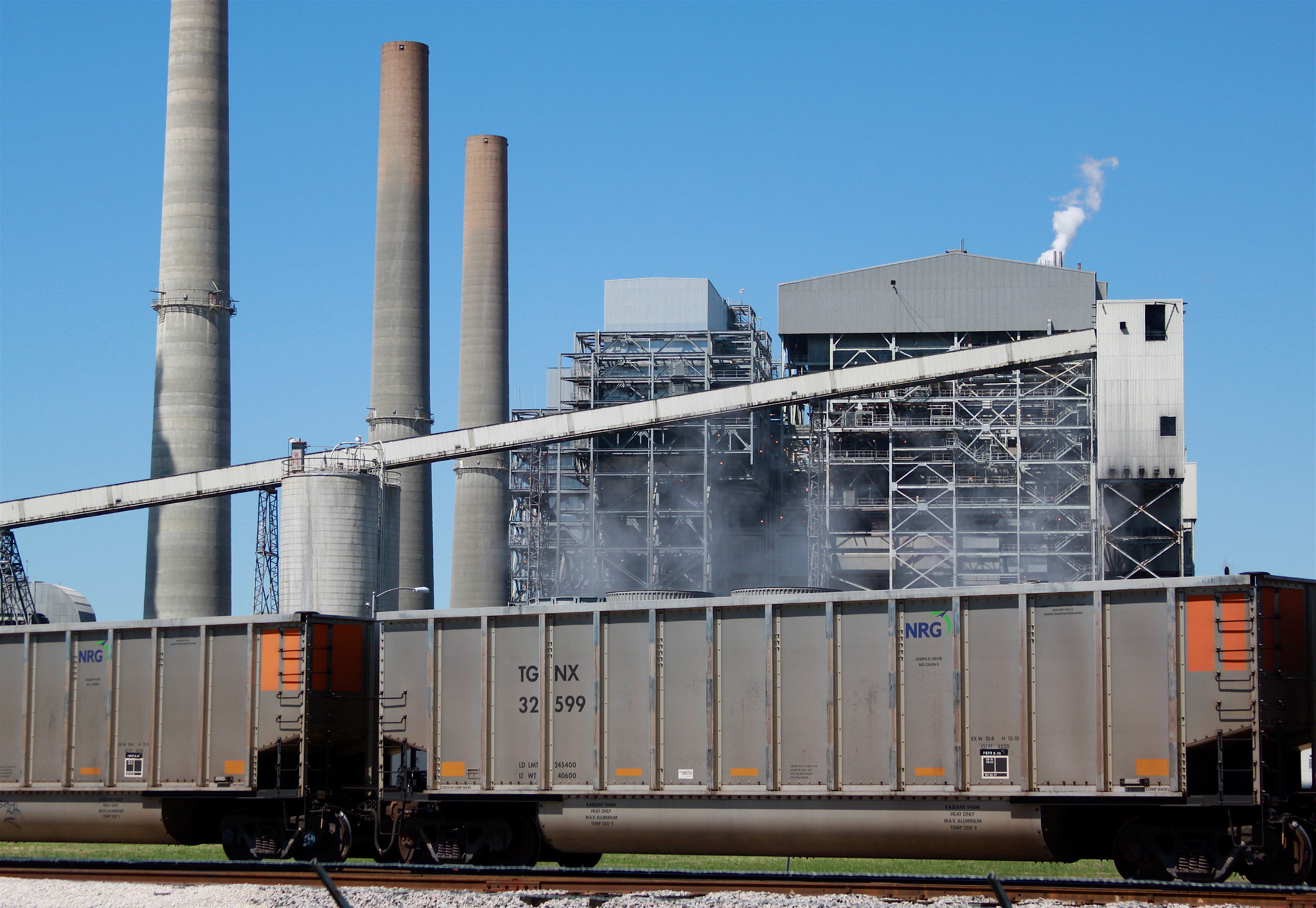
Who are the top climate polluters in the country?
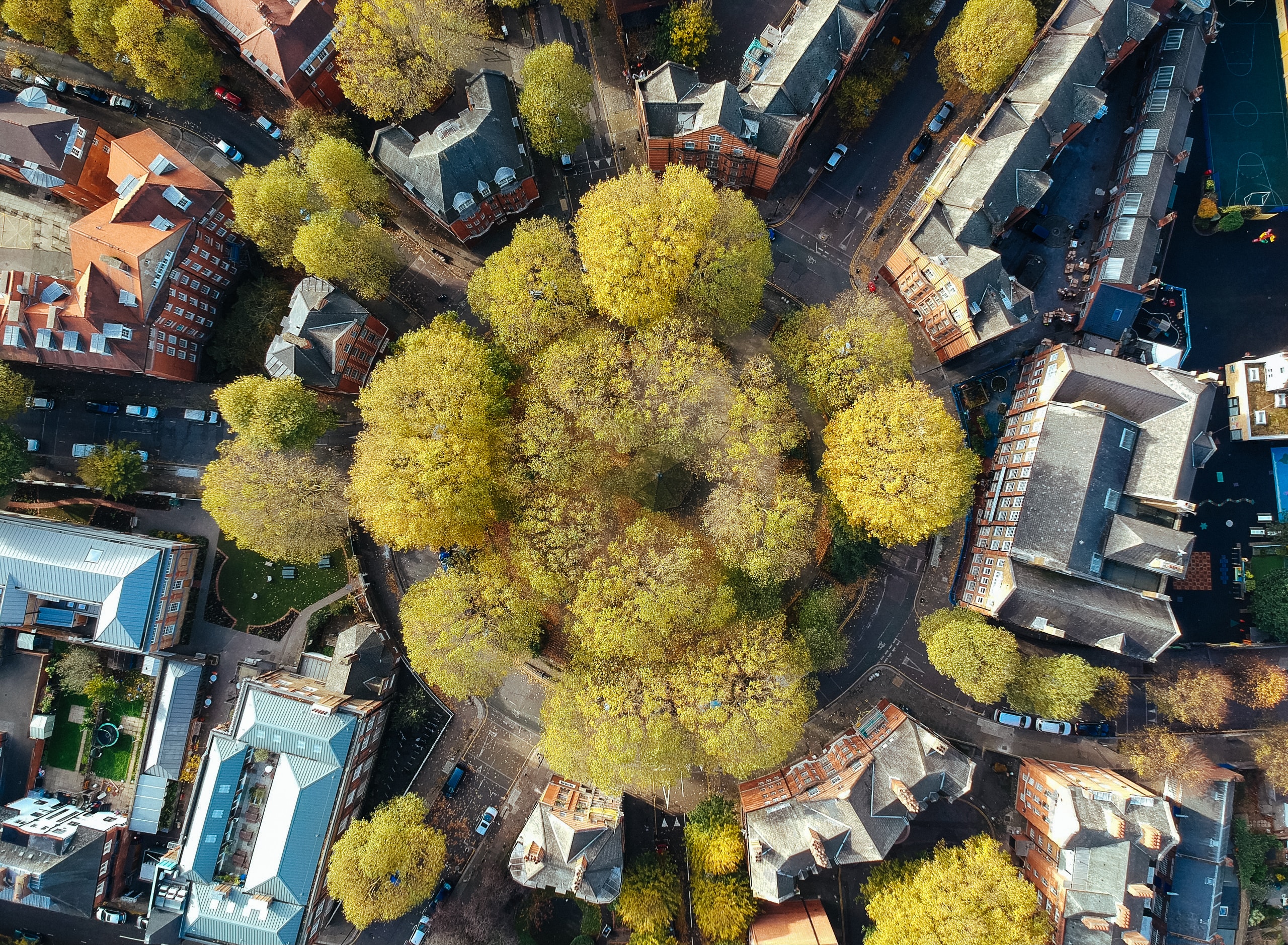
The Biden administration has released $1 billion in funding for urban trees. Here’s why that matters.
